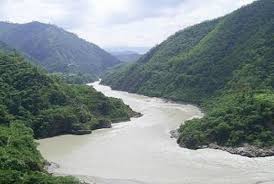Sludge in STPs with Potential for Use as Fertilizer
Researchers at the IIT Roorkee for the first time analysed the sludge found in sewage treatment plants (STP) in India, which were established to treat polluted water from the Ganga river. The study revealed that most of the sludge has a great potential for use as fertilizer, but it needs to be treated before it can be used without restrictions on farms or as a potential biofuel.
An Overview of Sludge
Sludge is a thick residue filtered out of Sewage Treatment Plants (STP) that contains a high concentration of organic chemicals and contaminants. Sludge management is a crucial aspect of ensuring environmental sustainability, particularly in developing countries where wastewater treatment infrastructure is often inadequate. The ‘Arth Ganga’ initiative, launched under the National Mission for Clean Ganga, aims to monetize and reuse treated wastewater and sludge, thereby deriving livelihood opportunities from the river rejuvenation programme.
Potential Uses of Sludge
Sludge can be reused in various ways, including as organic fertilizers, bricks, and even as a potential biofuel. However, the contaminants in sludge make it imperative to treat it before use to avoid potential hazards to human health and the environment.
Classes of Treated Sludge
Treated sludge is classified as Class A or Class B, with Class A being safe for disposal in the open and useful as organic fertilizer, while Class B sludge can be used only in “restricted” agricultural applications. However, India does not yet have any standards classifying sludge as Class A or B.
Sludge Management in Namami Ganga Mission
Under the Namami Ganga Mission, those awarded contracts for developing and maintaining STPs are apportioned land for disposing of sludge. However, sludge treatment before disposal is rare, leading to the sludge often making its way back into rivers and local water sources during rains.
Improving the Quality of Sludge
The quality of sludge can be improved by storing it for at least three months to kill pathogens and blending it with cattle manure, husk, or local soil to reduce the heavy metal content. This would still put the sludge in Class B, and converting it into Grade A sludge would require far more extensive treatment.
Study by IIT-Roorkee
The research conducted by the Indian Institute of Technology (IIT)-Roorkee revealed that the majority of the dried sludge examined was classified as Class B. While the sludge had high levels of nitrogen and phosphorus, basic soil nutrients, they also contained heavy metals, bacterial contaminants, and industrial effluents above the recommended fertilizer standards. The calorific value of sludge ranged from 1,000-3,500 kcal/kg, which is lower than the average calorific value of Indian coal.
Month: Current Affairs - May, 2023
Category: Science & Technology Current Affairs






